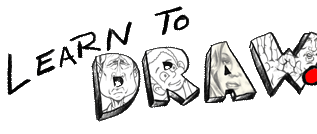Here are the front and back views of a male
whose major muscle groups are shown.
This is what a male looks like with zero
percent fat on the muscles. The detail
of the hands and feet are not shown
because we'll talk about drawing hands
and feet further down the road.
Understanding where the muscles are
and how they look will help you when
figure drawing. If you study what the
muscles look like and how they
interconnect, you'll be able to
understand what you're looking at when
the figure is foreshortened in some
manner. We will also discuss how to draw
the human body when it is foreshortened
elsewhere in this section. The muscle
shapes change as the figure moves,
either contracting or elongating, and if
you understand how the muscles interact
with each other, you'll understand more
fully how and what to draw. |
